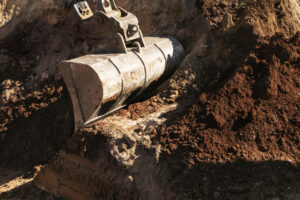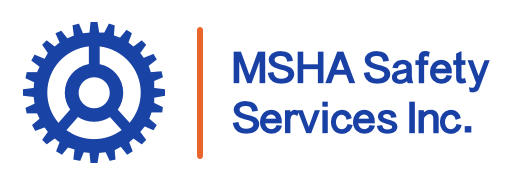Navigating mine safety regulations can feel overwhelming, especially for new miners or small business owners looking to ensure compliance with federal guidelines. MSHA Part 48 is a necessary component of mine safety that every miner, whether new or experienced, should understand.
In this article, we’ll break down the essentials of MSHA Part 48, we outline who needs this training, what it entails, and why it’s vital for maintaining a safe and compliant operation.
What is MSHA Part 48 Training?
MSHA Part 48 refers to mandatory safety training required for miners working in specific environments, including coal mines, underground metal and nonmetal mines, surface metal mines, and some surface nonmetal mines. It’s designed to equip miners with the knowledge and skills needed to maintain a safe work environment.
However, it’s important to note that this training is not required for surface mines in industries like surface stone, surface clay, sand and gravel, surface limestone, colloidal phosphate, and shell dredging–that’s Part 46 training.
What Do Part 48 Trainings Cover?
MSHA Part 48 training is divided into two subparts: Subpart A and Subpart B, each catering to different mining environments.
Subpart A for Underground Miners
Subpart A focuses on the training and retraining of underground miners. This includes new miner training and experienced miner training.
New miner training under Subpart A covers a wide range of topics, including:
- Statutory rights of miners and their representatives under the Act, as well as the authority and responsibility of supervisors.
- Self-rescue and respiratory devices to ensure miners can protect themselves in hazardous situations.
- The process of entering and leaving the mine, including transportation and communication methods.
- Introduction to the work environment, ensuring new miners are familiar with the layout and operational procedures.
- Mine maps, escapeways, emergency evacuation, and barricading to prepare miners for emergencies.
- Roof or ground control and ventilation plans to maintain structural integrity and air quality within the mine.
- Health and safety topics like hazard recognition, electrical hazards, first aid, mine gasses, and task-specific health and safety aspects.
For experienced miners, the training includes topics such as:
- Mandatory safety standards and their application in daily operations.
- Transportation controls and communication systems to enhance safety during mining operations.
- Barricading and roof or ground control techniques to manage and mitigate risks.
- Ventilation, emergency evacuation, and firefighting plans to ensure preparedness for emergencies.
- Prevention of accidents, which is critical in maintaining a safe mining environment.

Subpart B for Surface Miners
Subpart B addresses the training requirements for miners working at surface mines and surface areas of underground mines. Reminder: Subpart B does not apply to specific types of mines such as shell dredging, sand, gravel, surface stone, surface clay, colloidal phosphate, and surface limestone mines.
For new miners, Subpart B mandates at least 24 hours of training, with 8 hours completed before the commencement of work duties. This initial training focuses on:
- Introduction to the work environment to familiarize new miners with their surroundings.
- Hazard recognition and health and safety aspects specific to the mining environment.
- Transportation controls and communication systems.
- Escape and emergency evacuation plans, as well as fire warning and firefighting procedures.
- Ground control, working in areas of highwalls, water hazards, pits, and spoil banks, and considerations for illumination and night work.
- First aid, electrical hazards, and explosives.
Experienced miners under Subpart B also require annual training, including topics such as:
- Mandatory health and safety standards and their practical application.
- Authority and responsibility of supervisors and miners’ representatives.
- Prevention of accidents and emergency medical procedures.
- Health and safety aspects of the specific tasks miners are assigned.
How Long Does Training Take?
The duration of MSHA Part 48 training varies depending on the miner’s experience and the specific subpart under which they are trained.
For Subpart A:
- New miners must complete 40 hours of training, with at least 8 hours conducted at the mine site.
- Experienced miners are required to have 8 hours of training annually.
For Subpart B:
- New miners must complete 24 hours of training, with 8 hours conducted before they begin work at the mine site.
- Experienced miners must have 8 hours of annual refresher training.
It’s essential that only trainers with blue-card status conduct this training, ensuring that all instruction is accurate and up-to-date with the latest safety standards. This is because the MSHA Blue Card certification authorizes individuals to conduct miner training under Part 48 regulations; holders of this certification have completed the required training and are approved by MSHA to teach both new and experienced miners on essential safety topics. Essentially, it ensures that trainers are well-qualified to deliver the high level of education necessary to maintain safety standards in mining operations.
At MSHA Safety Services, our trainers are not only Blue Card certified, but have years of experience in the mining industry. Learn more here.
MSHA Part 48 Training: Your Path to Safety Compliance
If you’re looking to get started with MSHA Part 48 training, now is the time to ensure you’re equipped with the knowledge and skills you need to work safely.
Looking for comprehensive MSHA Part 48 training? Check out our MSHA-certified courses. They are designed to help miners meet all regulatory requirements and ensure safety on the job.

